The U.S. Air Force’s Air Mobility Command (AMC) recently made the decision to remove most of the markings and tail numbers from its refueling and cargo aircraft, according to a recent statement by the service. Ostensibly, AMC suggests the reason behind the change relates to operations security (OpSec), although some have questioned this rationale.
Confirmation of the change was first reported by Aviation Week on February 28, citing a recent emailed statement written by AMC spokesperson James Stewart. AMC oversees the majority of the Air Force’s cargo aircraft and aerial refueling tankers in a combat support role.
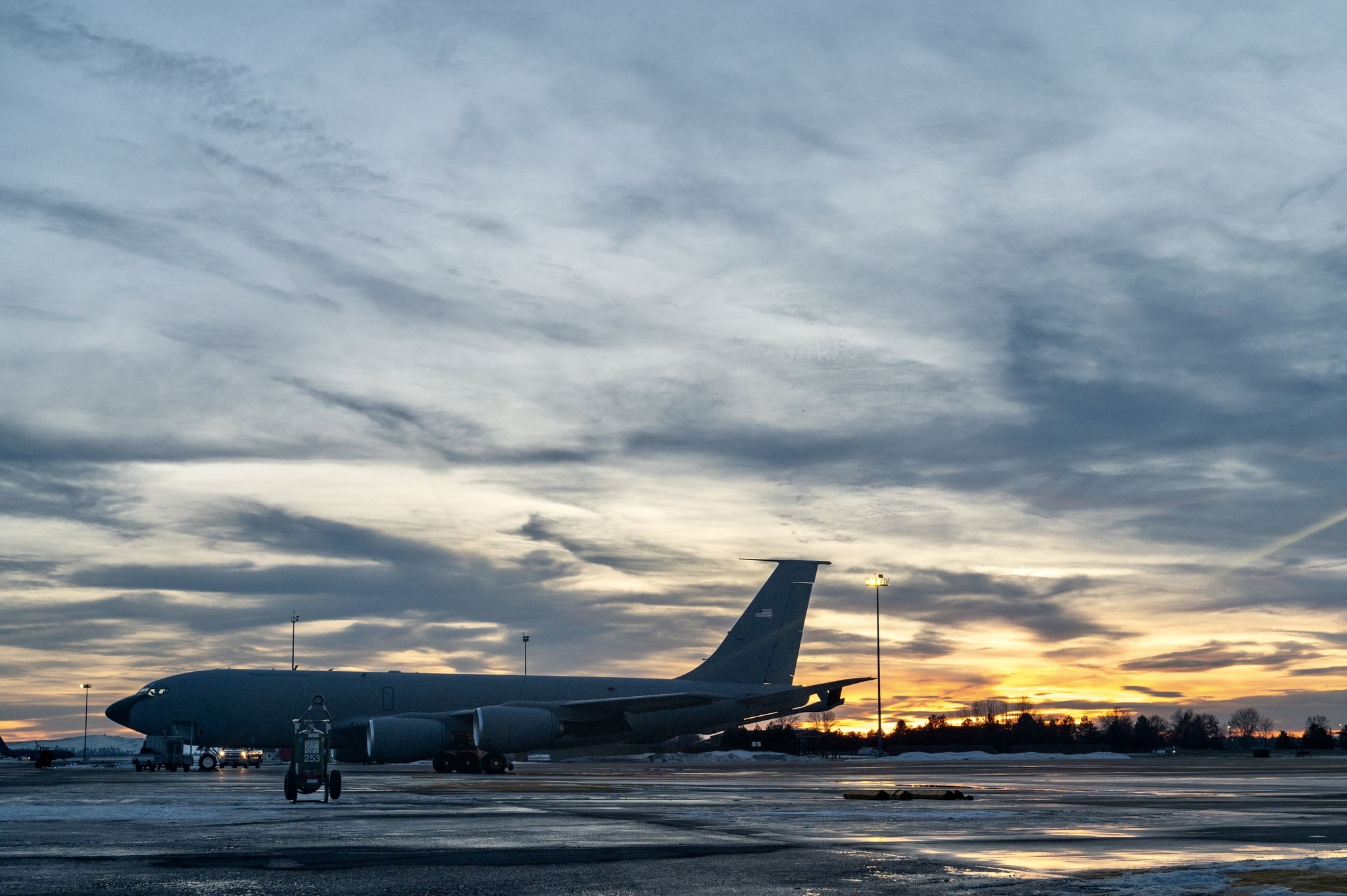
Typically, the tails of AMC refueling and cargo aircraft feature a small U.S. flag, the letters AMC, a custom colorized flash with the name of the aircraft’s home station, and a five-digit identification number. The Air Force roundel is painted below the tail, while the “U.S. AIR FORCE” marking is displayed further forward on the fuselage. Other emblems and information are also frequently displayed elsewhere on AMC aircraft fuselages.
Now, AMC refueling and cargo aircraft will only feature the small U.S. flag on their tails and light gray roundels designed to blend in with the overall livery. There had already been indications that the command was looking to do away with the tail flashes detailing each aircraft’s home base and heritage information.
Until this point, however, only active-duty AMC KC-46A Pegasus tankers were barred from displaying tail flashes under a policy introduced back in 2021. In addition, the command had said at the time that this change was primarily about fleet management, making it easier for aircraft to move between units without needing to be repainted, rather than OpSec.

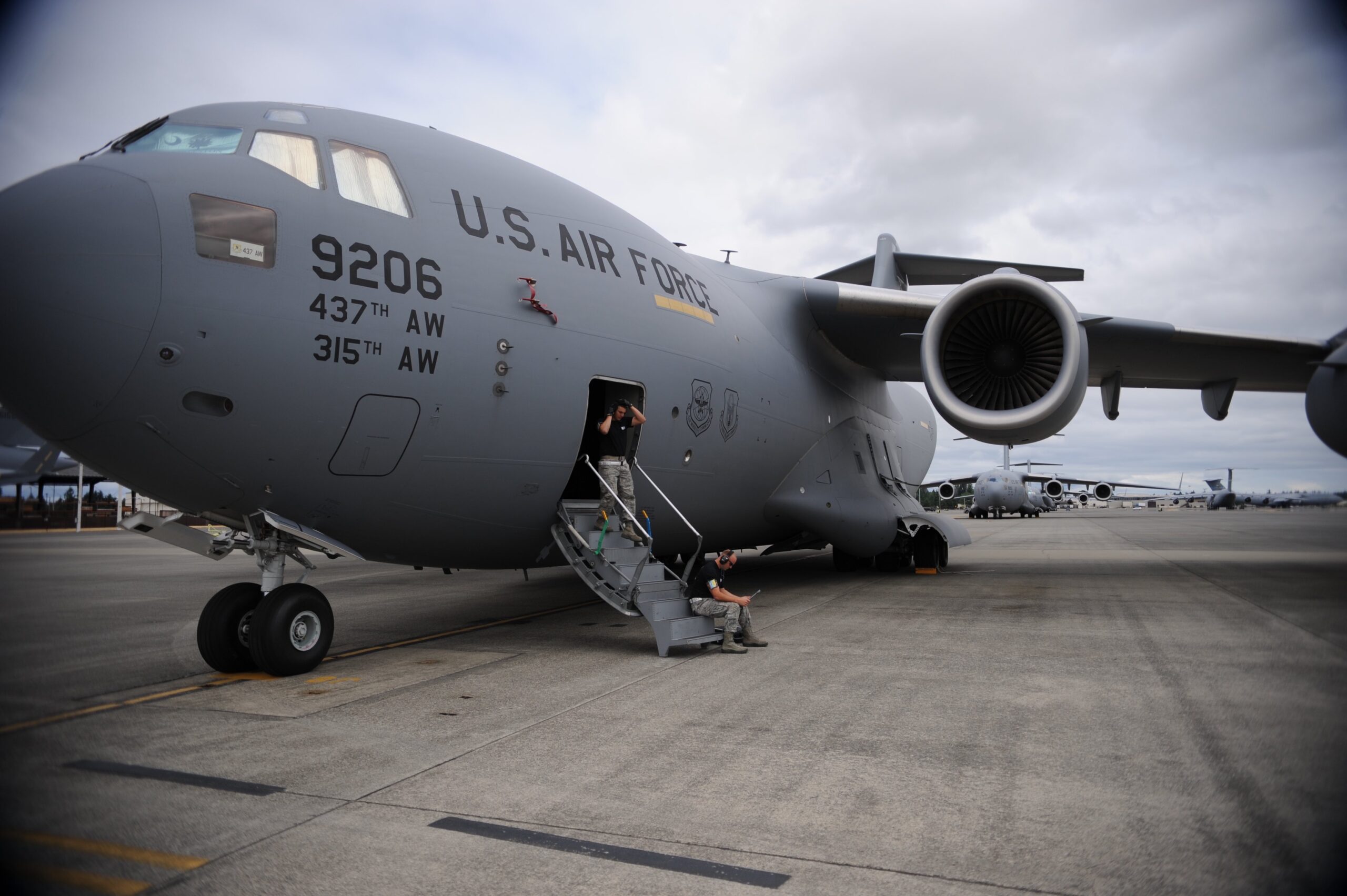
Recent images, seen below, of AMC airlift and tanker aircraft, taken in February of this year, show the minimalist scheme on both C-130J transports and KC-135R tankers.
According to Aviation Week, AMC began removing the markings and tail numbers on its limited inventory of KC-46 tankers, which were cleared to support combat operations in September 2022, before moving to other airlift and tanker aircraft. AMC’s wider refueling and cargo aircraft inventory includes the C-17 Globemaster III, C-130 Hercules, KC-10 Extender and KC-135 Stratotanker, and C-5 Galaxy aircraft. At present, it is unclear exactly how many AMC aircraft have had markings and tail numbers removed.
The War Zone reached out to AMC directly for comment and clarification. However, AMC provided no additional details on the marking changes beyond the service’s original statement reported by Aviation Week in their response.
“We operate across the globe every day, often supporting sensitive movements of people and cargo,” AMC’s statement sent to Aviation Week reads. “Understandably, we have concerns about the operational security impacts to these missions in the modern era of on-demand, real-time information.”
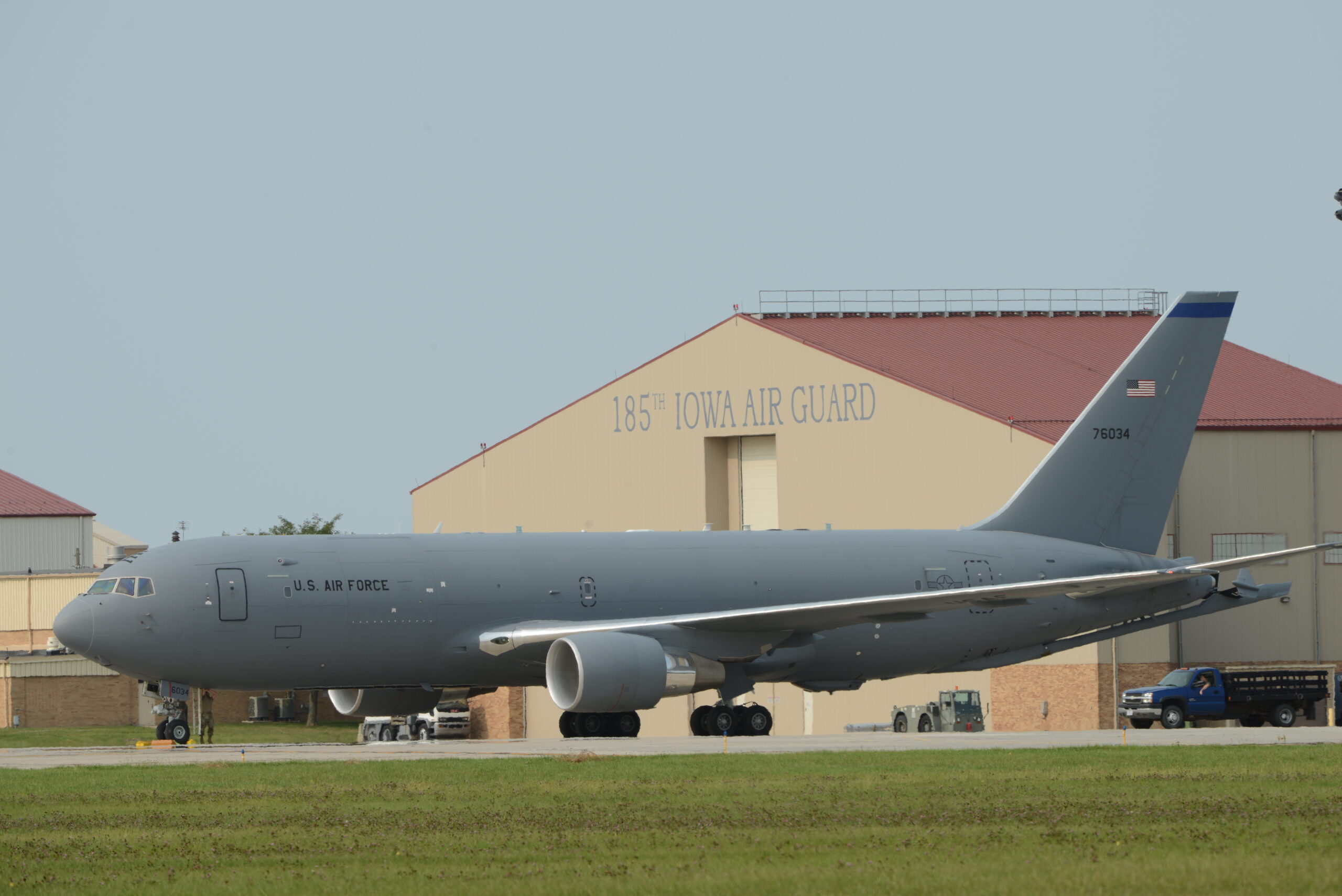
“Subdued paint schemes that limit identifiable information is one way we are taking a hard look at how we operate to ensure our ability to continue to deliver for America and our allies and partners around the world,” the statement highlights. “Because of operational security concerns, we cannot provide specifics, though our aircraft will maintain markings as required by law.”
AMC’s claim that operational security concerns justify the removal of aircraft markings has been questioned by some of those familiar with the subject. We reached out to Robert Hopkins, veteran Air Force C-135 pilot, author, and past contributor to The War Zone, for his take on AMC’s decision:
“There is zero historic precedent for the removal of markings on tankers and transports in wartime,” he stated. “During the Vietnam war, tankers were silver with full-color markings, C-130 transports eventually acquired tan/green camo but with white tail codes, full-color national insignia, etc. C-141s were silver or white/grey … AMC has had a grey scheme on all its transports since 1992.”
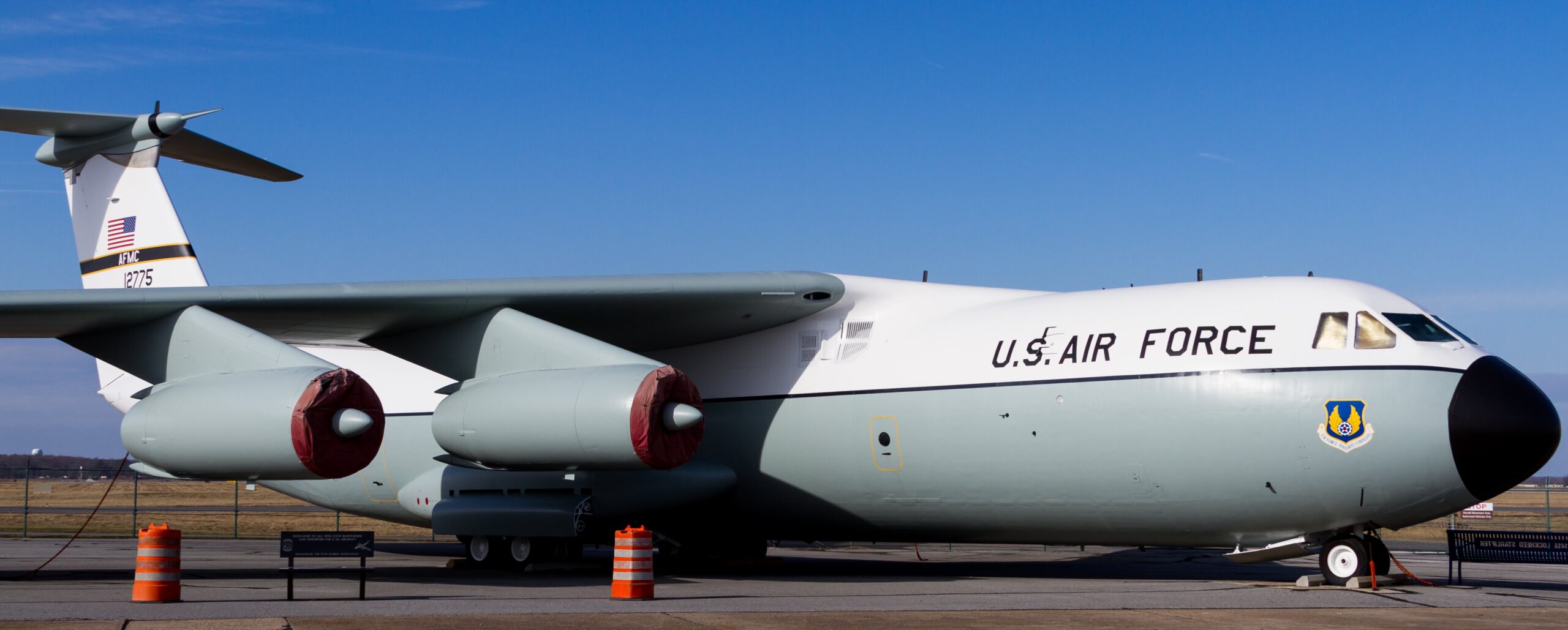
“There is no sudden combat-related justification to remove [the] U.S. Air Force [marking],” Hopkins stressed. “To claim OpSec is equally ludicrous. When a KC-135 lands at RAF Mildenhall, for example, having just the star-and-bar (required by ICAO [the International Civil Aviation Organization]) conspicuously identifies the jet as American no more or less than if it carried full markings.”
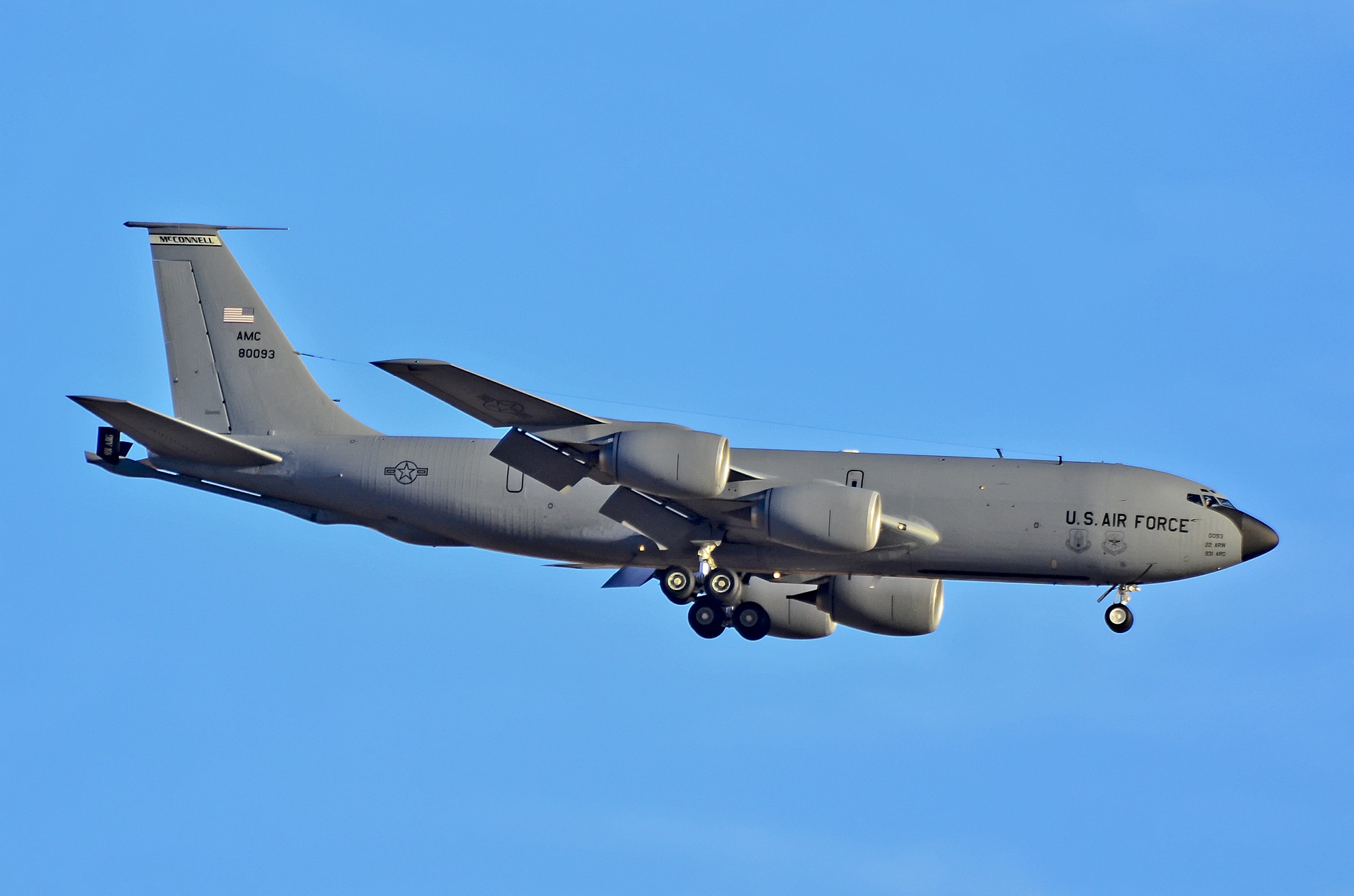
Of course, this all comes within the wider context of AMC Commander Gen. Mike Minihan’s broader vision of the role the service could play in a possible future conflict, particularly in the Indo-Pacific involving the U.S. and China. While Minihan is not the only senior figure within the U.S. military who believes a high-end conflict involving China is on the horizon for the U.S., his past comments, emphasizing the primacy of lethality at all costs, as well as the near timeframe of such a conflict, have been seen as controversial.
As The War Zone reported in January, a two-page internal AMC memo future-dated February 1 revealed that Minihan believes a conflict involving the U.S. and China will unfold in 2025, likely over Taiwan. Minihan’s memo calls for AMC leadership to ensure units are as ready as possible for such an eventuality. The four-star general emphasized that various AMC personnel should visit the shooting range with instructions to “aim for the head.” The Pentagon subsequently distanced itself from Minihan’s hard-line approach.
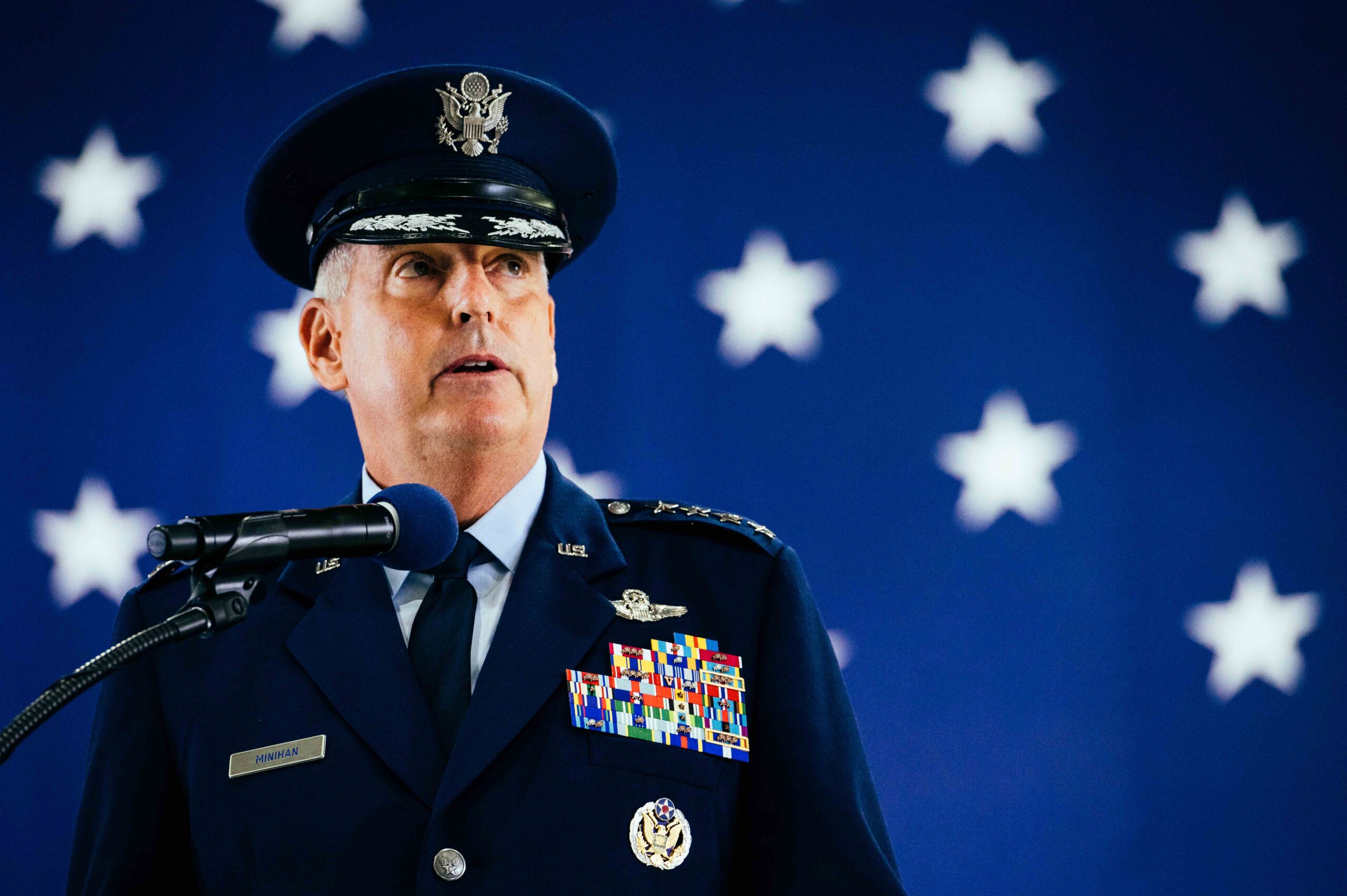
Intriguingly, Minihan also mentioned work on a concept to launch around 100 commercial-off-the-shelf drones from a KC-135 tanker in the memo – something which, as we previously noted, would require a combination of storage, integration, and specific tactics to achieve. More broadly, AMC C-17A transporters have been used to test the Air Force’s Rapid Dragon air-launched palletized munitions concept, consisting of multiple munitions contained within modular airdropped frames loaded onto a cargo-carrying aircraft with a large rear ramp. The Air Force has conducted further experiments with the concept using C-130 transports. These initiatives, as well as AMC’s recent decision to remove markings and tail numbers from its refueling and cargo aircraft, certainly have something of a tactical air about them beyond combat support.
Of course, the removal of visual markings and tail numbers won’t diminish the ability to track AMC refueling and cargo aircraft. Trackers will still be able to follow movements via Automatic Dependent Surveillance-Broadcast (ADS-B) transponder data when the aircraft are broadcasting that information. Spotters on the ground will also still be able to see residual markings and will be able to report aircraft arrivals and departures, as well.
Still, the move has drawn concerns about transparency. Speaking to Thomas Novelly at Military.com, Jason Paladino, an investigator for the nonprofit Project On Government Oversight, argued the following:
“This is a data point that was previously available to the public that this command, it seems, is deciding for operational security reasons that it won’t get into, that the public doesn’t have a right to know, which I do think is concerning.”
It is also worth noting that combat aircraft, such as fighters, bombers, and other types still retain their standard markings. It will be interesting to see if AMC’s new directive will be adopted in some fashion by Air Combat Command’s fleet, as well.
Regardless, expect AMC aircraft to appear a bit less distinct and grayer than they have been in the past going forward.
Contact the author: oliver@thewarzone.com
